Exploring Innovative Tiny Home Designs
In the world of tiny home plans, you find yourself on a journey of innovation and creativity, where every square foot counts. From the clever interplay of space-saving solutions to captivating tiny house interior designs, each plan is a testament to efficient use of space. As you delve into how to build a tiny house, you'll uncover tiny home designs that surprise with their functionality and charm. Whether it's tiny home blueprints featuring versatile, multi-use areas or dynamic tiny house on wheels plans, the range of possibilities seems endless. With affordable tiny homes at the forefront, best tiny house kits offer a gateway to a life of simplicity and sustainability. These tiny house design ideas, tailored for modern tiny house living, redefine comfort on a micro scale. Exploring these concepts, you'll discover innovative approaches that not only inspire but also offer practical solutions for contemporary living.
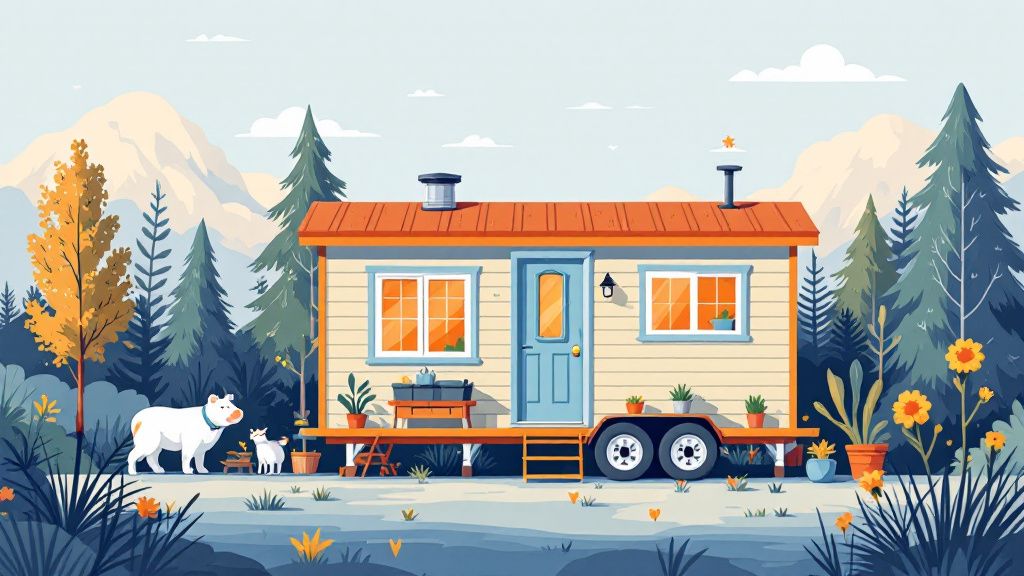
Benefits of Living in a Tiny Home
Living in a tiny home offers unique advantages that make this lifestyle increasingly appealing. Reduced living expenses are a primary benefit, as tiny home construction plans typically lead to lower costs on utilities and maintenance. This financial freedom allows you to allocate resources elsewhere, whether it's saving for the future or investing in experiences. For those considering tiny house living, this cost-effectiveness is a significant draw.
Space efficiency is another advantage. Tiny house interior designs maximize every inch, transforming cramped spaces into comfortable living areas. Smart storage solutions and multi-functional furniture make even the smallest spaces feel expansive and uncluttered, enhancing your daily life. With thoughtful tiny home designs, you enjoy the luxury of space without excess.
Tiny house living also promotes a sustainable lifestyle. By reducing your environmental footprint, you contribute to preserving our planet’s resources. Utilizing best tiny house kits enables the use of eco-friendly materials, leading to a home that’s both stylish and responsible. For those passionate about sustainability, tiny homes represent an ideal choice.
Did you know? A recent study found that 68% of tiny homeowners have no mortgage, underscoring the financial benefits of opting for smaller spaces. This statistic highlights the growing popularity of affordable tiny homes as a viable alternative to traditional housing. As you explore how to build a tiny house, these benefits showcase why many find tiny house living an irresistible option.
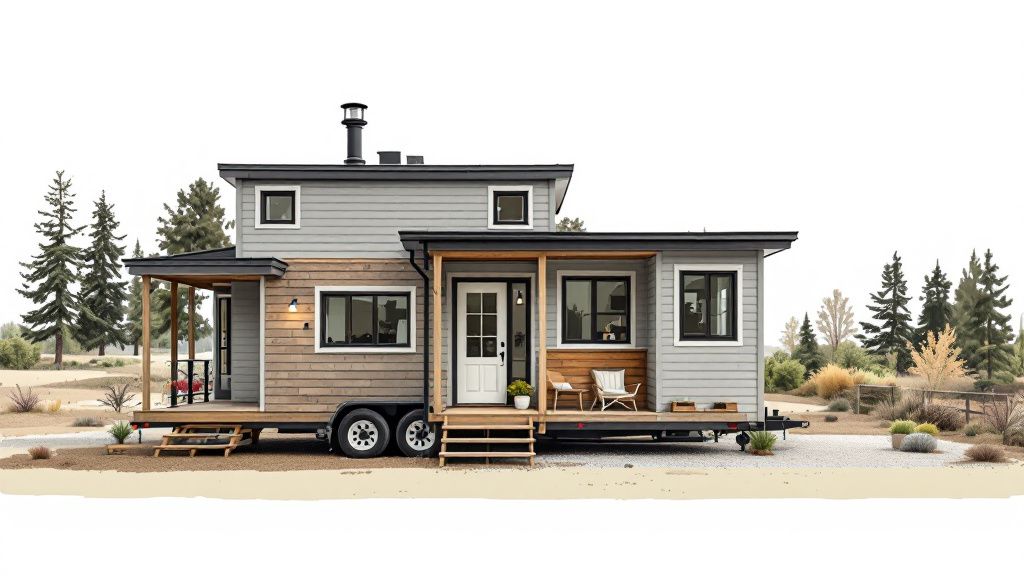
Popular Tiny Home Architectural Styles
Exploring popular architectural styles among tiny homes reveals a diverse world where form meets function. The minimalist modern style, characterized by clean lines and open spaces, is a favorite for those seeking a sleek look. This approach often incorporates large windows and open floor plans, maximizing natural light and providing a sense of spaciousness. For tiny house living enthusiasts, modern designs are both stylish and practical.
The rustic cottage style offers a charming alternative, blending traditional aesthetics with cozy comfort. Known for its use of natural materials like wood and stone, this style exudes warmth and nostalgia. Tiny home designs in this category often feature compact layouts and inviting interiors, making them a perfect fit for affordable tiny homes on wheels. Such designs evoke a sense of home that's both quaint and timeless.
Craftsman-style tiny homes are celebrated for their artisanal attention to detail and handcrafted elements. With intricate woodwork and a focus on quality craftsmanship, these tiny home blueprints pay homage to early 20th-century architecture. According to recent studies, the appeal of this style lies in its emotional warmth, scientifically explained by our inherent attraction to artisanal craftsmanship and natural materials. This architectural choice offers a unique blend of design sophistication and heritage charm.
For those curious about how to build a tiny house, exploring these architectural styles opens up a world of creativity and personalization, allowing you to tailor your tiny home to fit your aesthetic and functional needs.
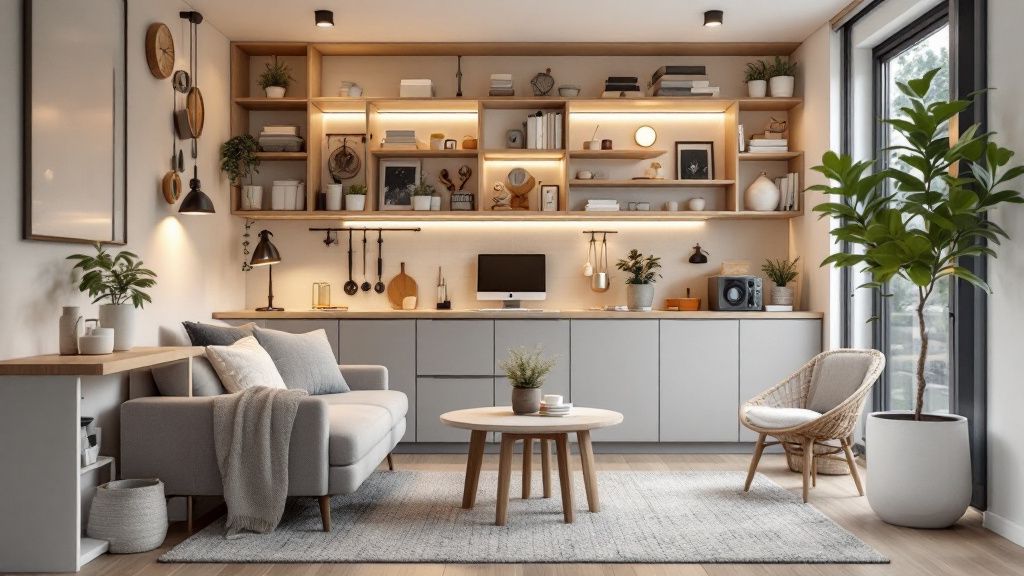
Functional Space-Saving Interior Ideas
In the realm of tiny house living, functional space-saving interior ideas become your best ally in making the most of limited areas. Creative storage solutions are paramount, as they help maintain organization and maximize available space. Consider using vertical storage and floating shelves to keep belongings out of the way, yet easily accessible. Such strategies transform cluttered rooms into efficient and tidy living spaces, enhancing day-to-day comfort.
Dual-purpose furniture is another game-changer in tiny homes. Pieces like fold-out desks, Murphy beds, and expandable tables offer flexibility, accommodating various needs without occupying valuable floor space. These multifunctional elements are essential components of tiny house interior designs, allowing you to adapt your living area as needed. This dynamic use of furniture keeps your tiny home both spacious and versatile.
Compact yet functional kitchen layouts are vital for efficient tiny house design ideas. Thoughtfully designed kitchens often feature pull-out cabinets, under-counter appliances, and convertible countertops that provide ample workspace. For example, incorporating a hinged countertop extension can instantly increase your prep area, making cooking a joyous activity rather than a cramped chore. These enhancements elevate everyday functionality in your tiny home kitchen.
Incorporating light-enhancing elements can also make a significant impact on small spaces. Large windows, glass doors, and strategically placed mirrors reflect natural light, creating an illusion of larger interiors. As you delve into how to build a tiny house, integrating these light-enhancing ideas can dramatically improve the ambiance of your home, making it feel airy and inviting.
By embracing these functional and innovative setups, tiny home designs remain not only practical but also ensure that each space feels open and well-utilized. These strategies, paired with your tiny home construction plans, ensure a harmonious balance of style, efficiency, and comfort within your home’s interiors.
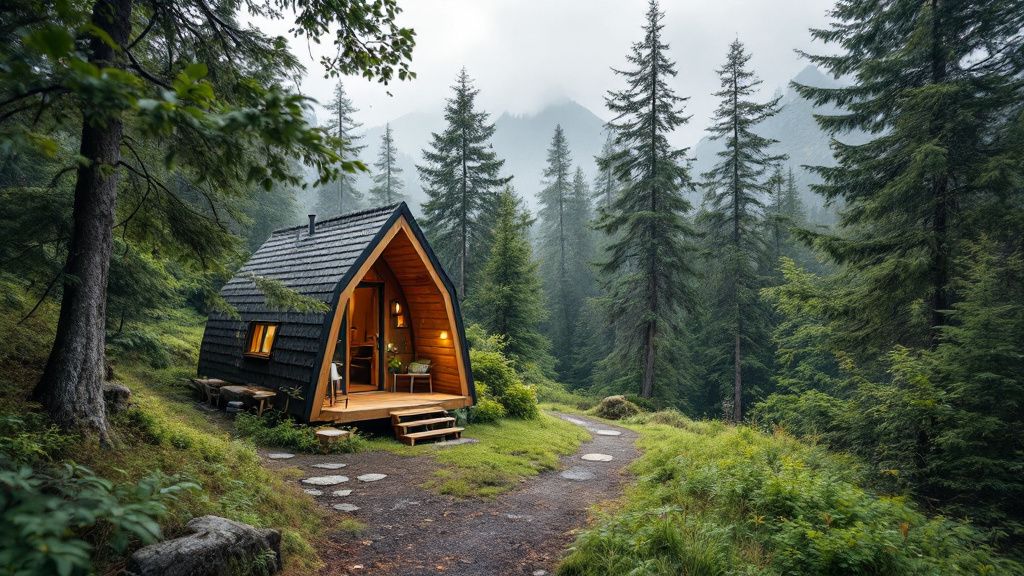
Unique Locations for Tiny Homes
Choosing a unique location for your tiny home significantly influences your lifestyle and home experience. Setting a tiny house amongst scenic landscapes like mountains or lakeshores offers an unparalleled connection to nature. These dramatic backdrops not only enhance the beauty of your tiny home designs but also provide serene retreats away from urban chaos, allowing you to fully immerse in tiny house living surrounded by natural splendor.
Urban settings present a contrasting experience for tiny homes. Comparing urban locations versus rural landscapes, cities provide convenience with close proximity to amenities and a vibrant social scene. Urban tiny home living challenges involve navigating restrictive zoning laws and limited space. However, the innovative tiny house blueprints tailored for city life ingeniously maximize compact urban plots while providing all the comforts of home.
For those desiring flexibility, mobile tiny houses on wheels offer endless possibilities for travel. Stationing your tiny home in areas like national parks or coastlines opens avenues for exploration and adventure. With mobile homes, comparing stationary living versus nomadic lifestyles, you gain freedom without sacrificing the comfort of tiny home interior designs. This mobility grants the best of both worlds: constant changes of scene combined with the familiar coziness of your personal space.
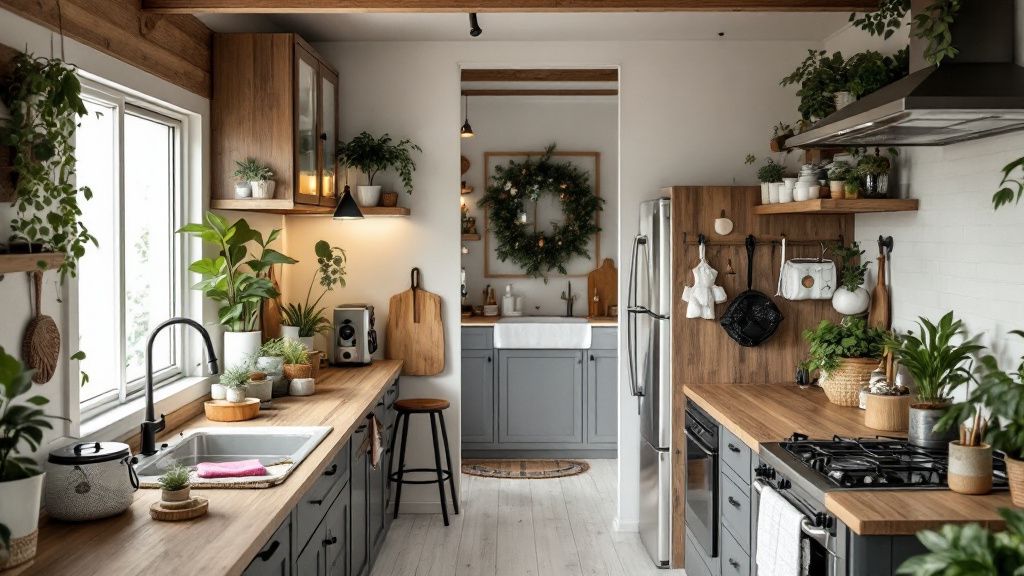
Challenges of Tiny Living and Solutions
Navigating the challenges of tiny house living requires thoughtful planning and creativity. One common issue is limited space, which can be overcome by employing innovative storage solutions and multifunctional furniture as part of your tiny house interior designs. By prioritizing efficient layouts and utilizing vertical space, you transform potential constraints into opportunities for streamlined living.
Privacy often presents another challenge in tiny home plans, especially when living with others. Solutions involve thoughtful design choices, such as partitions or lofted areas, to create distinct spaces within your compact environment. When considering tiny home blueprints, incorporating clever design elements ensures comfort and personal space, despite the limited square footage.
To truly embrace tiny living, you need to shift your mindset from accumulating possessions to valuing experiences and simplicity. Reducing belongings not only alleviates clutter but also fosters an appreciation for a minimalist lifestyle. This mindset shift aligns perfectly with tiny house design ideas that emphasize quality over quantity and personal joy over material accumulation.
In dealing with zoning regulations and logistical hurdles, knowing how to build a tiny house legally becomes crucial. Engaging with local authorities and community initiatives can provide guidance and support. Such proactive steps help in navigating bureaucracy, ensuring your tiny home complies with local laws and can be enjoyed without interruptions.
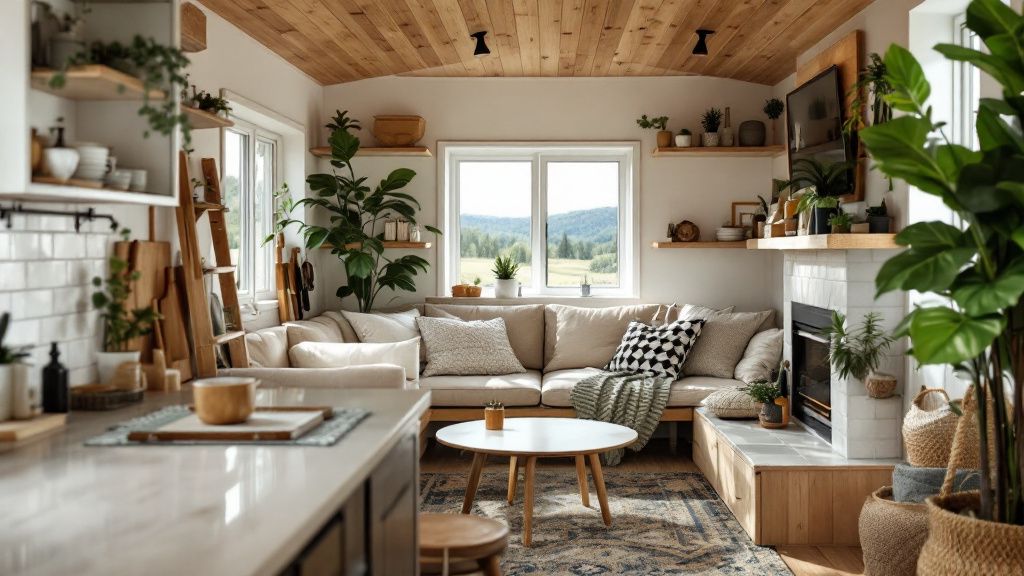
DIY vs Professional Tiny Home Building
Deciding between DIY construction and hiring professionals for your tiny house project involves weighing various factors. DIY enthusiasts find joy in building their own homes, often seeing it as a cost-saving adventure that offers complete control over tiny home designs. With access to best tiny house kits, many take this route to customize their living space, bringing personal tiny house design ideas to life with hands-on involvement.
On the other hand, some argue that professional builders ensure a higher level of craftsmanship and adherence to safety standards. This perspective values the expertise professionals bring to tiny home construction plans, often resulting in a more streamlined and stress-free building process. Hiring experts also means benefiting from their experience in navigating any potential legal and zoning complexities.
Engaging professionals provides peace of mind, particularly for those unfamiliar with how to build a tiny house. It eliminates the learning curve associated with DIY projects and can reduce the risk of costly mistakes. Professionals often have access to high-quality materials and established relationships with suppliers, which can enhance the overall quality of tiny home blueprints and the final build.
Whether choosing DIY or professional building, the decision ultimately rests on your skills, budget, and desired level of involvement. Each option offers unique advantages, shaping the journey to your ideal tiny house on wheels or stationary property. Making an informed choice ensures that your venture into tiny house living aligns with both your lifestyle goals and practical needs.
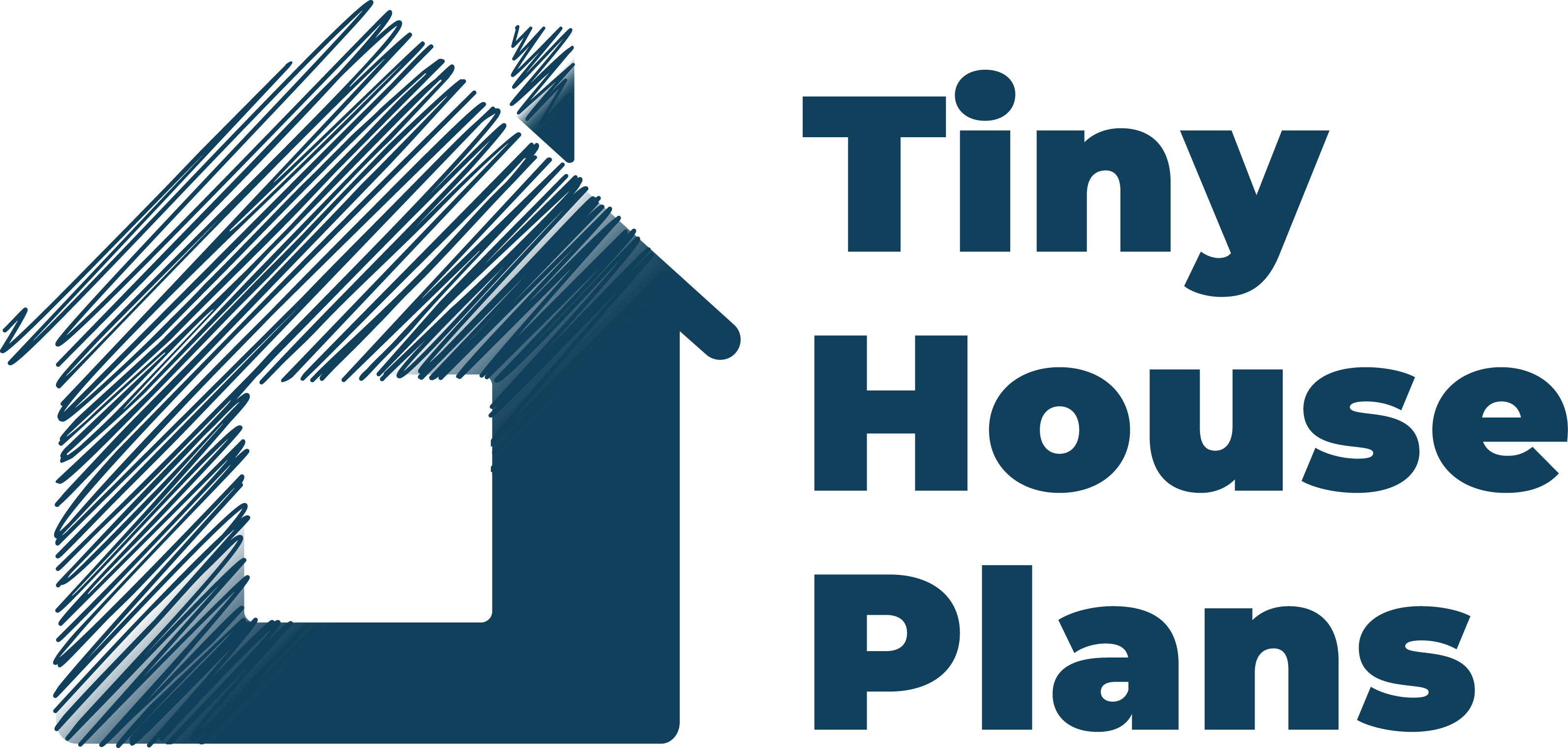




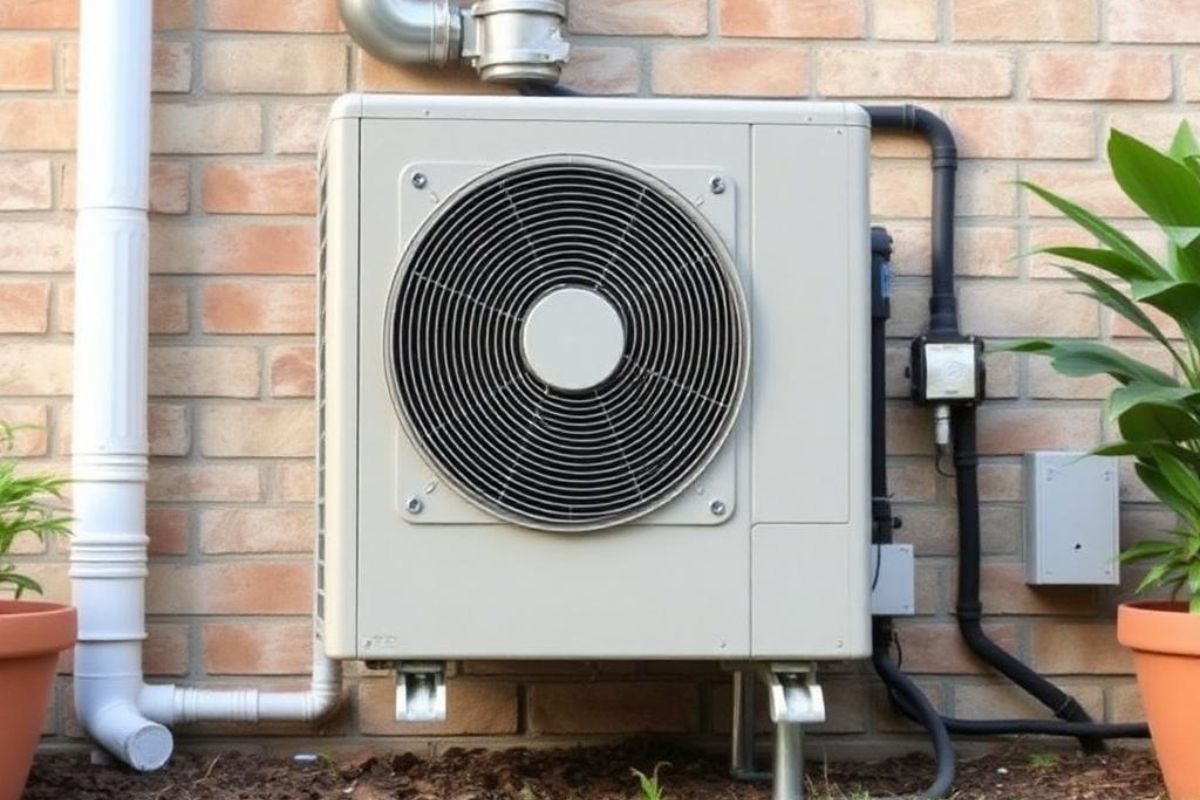
Share: